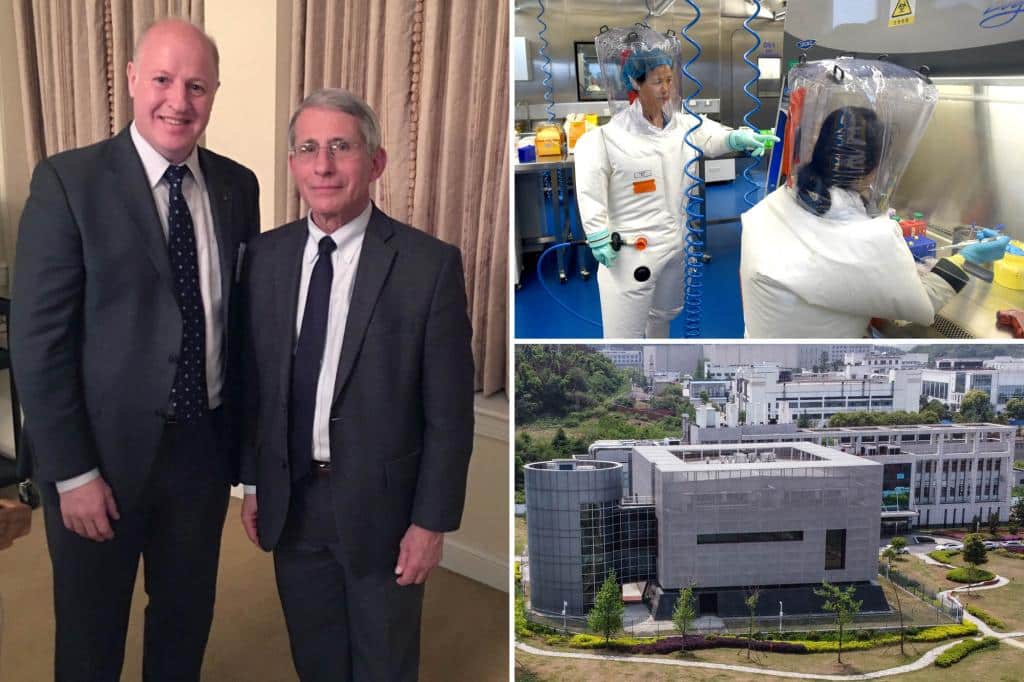News
Newly released documents and internal messages related to the 2018 coronavirus research proposal reveal scientists’ concerns that the Chinese lab at the center of the COVID-19 lab leak theory will be viewed as a security risk by US officials.
Drafts and notes on the grant proposal Project DEFUSE, co-authored by American researchers and scientists from the Wuhan Institute of Virology, Published by US Right to Know Monday through a Freedom of Information Act request.
The proposal, which was ultimately rejected and denied funding by the US Defense Advanced Research Projects Agency (DARPA), was submitted by the now-controversial EcoHealth Alliance, which sought to engineer bat coronaviruses to be more easily transmissible to humans. .
The researchers suggested that in the laboratory, “human-relevant cleavage sites” were inserted into the spike proteins of SARS-related viruses.
A draft proposal was released to the public in 2021, raising speculation that the coronavirus pandemic may have been caused by infected lab technology or improper disposal of hazardous waste from the Wuhan facility.
Now, messages and memos between the proposal’s authors, as well as preliminary drafts released this week, add another layer to the theory.
The researchers planned to conduct part of the study at the Wuhan lab, where safety measures did not meet US standards, according to the new documents, according to US Right to Know, a non-profit public health research group.
“Ralph, Zhengli. If we win this contract, I’m not suggesting that all of this work will necessarily be done by Ralph, but I want to emphasize the US side of this proposal so that DARPA is comfortable with our team,” wrote EcoHealth Alliance’s Peter Daszak. Ralph Baric, a researcher from North Carolina, and Zhengli Shi, the Wuhan scientist at the center of the lab leak theory.
“Once we get the funds, we can sort out who exactly is working, and I believe a lot of this analysis can be done in Wuhan as well…”
He also said he wanted to “minimize” China’s involvement in the research in hopes of securing funding from DARPA.
“I plan to use my resume and Ralph’s resume,” Daszak said. “Linfa/Zhengli, I understand that your CVs are also very impressive, but I am trying to reduce the focus of this proposal outside of the US so that DARPA does not see it as a negative.”
In an earlier version of the project proposal, the researchers said the project would be “expensive” because it would only require a biosafety level two (BSL-2) lab, four by four. (BSL-4) is the most stringent level of safety standards.
“The BSL-2 nature of working on SARSr-CoVs makes our system highly cost-effective compared to other bat virus systems (eg, Ebola, Marburg, Hendra, Nipah) that require BSL-4 level facilities for cell culture.
The proposal was later edited to change BSL-2 to BSL-3, noting that the lower level of biosafety standards would “likely confuse” US scientists.
“In the US, this recombinant SARS-CoV is being studied under BSL3, not BSL2, which is especially important for those able to bind and replicate in primary human cells,” Baric commented on the original paper. “In china (sic), this virus can grow [sic] under bsl2. US researchers [sic] it’s probably going to be crazy.”
The EcoHealth Alliance said in a statement Tuesday that DARPA never funded the study and the work was never done.
“Because the work was not selected for funding, any claims about these details are by definition based on a review of incomplete data and are grossly inaccurate,” he said.
But two years after the project was rejected, some scientists say they’ve seen enough to believe the lab’s technology is responsible for the worldwide pandemic.
Biologist Matt Ridley tweeted: “This latest leak makes the case for a lab leak almost certain.” “Reckless practice, known at the time to be reckless, probably killed millions of people. “Scientists and the media conspired to hide the evidence.”
Download more…
{{#isDisplay}}
{{/isDisplay}}{{#isAniviewVideo}}
{{/isAniviewVideo}}{{#isSRVideo}}
{{/isSRVideo}}
